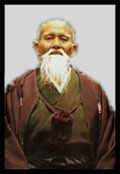Brief Aikido description
Although the art of Aikido is difficult to describe since, as in every other art, personal experience gives the best picture, the syllabus that the participant is required to learn and apply is divided into five parts:
Preparation |
|
Consists of classic stretching exercises for the entire body combined with specific exercises for stretching of the joints, necessary for Aikido training. Usually executed in the first 15 – 30 minutes of every lesson. |
|
Unarmed techniques |
|
Consists of the main body of Aikido exercises and is an important part of its inheritance. Unarmed techniques are one of the most important parts of Aikido and are divided into:
a) Falls (ukemi waza) The above can be executed either from a standing position (tachi waza), or from a kneeling position (suwari waza), or from a standing position for the attacker and kneeling position for the defender (hanmi handachi waza). Techniques are executed either on the basis of a scenario in which both participants know the attack and defense technique to be conducted beforehand, or semi open in which the attack is known but not the defense (or vice versa), or entirely open in which both attack and defense are unknown. A general term for the last two cases is jiyu waza. |
|
Armed techniques |
|
Armed techniques are also an important part of the teaching syllabus of Aikido since:
a) They explain the origin of Aikido to the practitioner in a better way (some of the unarmed techniques of Aikido derive
from sword fighting moves) Weapon techniques are divided into:
a) Repeated exercises (suburi), to acquire proper stance and technique |
|
Developing Ki |
|
These exercises aim to develop internal strength which is fundamental to the development of Aikido. The exercises consist of breathing exercises (Ki breathing) and balance and movement exercises which are executed either individually or in pairs. It is worth noting that Ki exercises can also be executed by people who do not practice Aikido, as exercises which are beneficial to general health and well being. |
|
Meditation |
|
Involves exercises of silent meditation for several minutes before the start of training, or following the end of training. Meditation exercises frequently include breathing exercises. |
|



 FukuShinKan Dojo, 12 Davaki st.and 18 Mylpotamou st., 1st floor
FukuShinKan Dojo, 12 Davaki st.and 18 Mylpotamou st., 1st floor Hellenic Aikido Association on facebook
Hellenic Aikido Association on facebook Hellenic Aikido Association's YouTube channel
Hellenic Aikido Association's YouTube channel